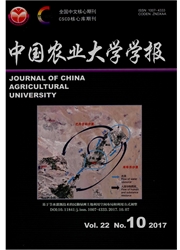

 中文摘要:
中文摘要:
以西北干旱内陆区石羊河流域中游武威盆地为例,分析比较地统计学方法常用的8种空间插值方法在地下水位插值中的应用效果。结果表明:反距离加权法(IDW)插值误差较大,容易出现"牛眼"现象;多项式插值(GPI和LPI)要求资料的全局或局部趋势性很强,导致在对离群值插值时,误差偏大;径向基函数插值(Rspline和Tspline)对数据的要求较高,需要数据变化范围小,否则其插值结果差异很大;普通克里格插值(OK)效果较好,尤其对离群值的处理表现出较明显的优势。其中OK、泛克里格插值(UK)插值较简单克里格插值(SK)插值误差较小,且插值结果较光滑,符合实际地下水位变化趋势。
 英文摘要:
英文摘要:
The Wuwei basin in middle reaches of the Shiyang River basin was selected to analyze the application of eight spatial interpolation methods to groundwater level variation based on ArcGIS.The results showed that IDW method has a higher error and is prone to appear "buphthalmos".The data must present a strong global or local trendy when used for polynomial interpolation,which results in larger errors for outlier cutoffs data.Radial Basis Function needs data with little change.However,the results from Kriging method fit well,especially for outlier cutoffs.Compared with SK,the errors of OK and UK are smaller with the smooth simulated groundwater water levels,which satisfy the actual trend of groundwater levels.
 同期刊论文项目
同期刊论文项目
 同项目期刊论文
同项目期刊论文
 Effect of groundwater level depth and irrigation amount on water fluxes at water table and water use
Effect of groundwater level depth and irrigation amount on water fluxes at water table and water use 期刊信息
期刊信息
